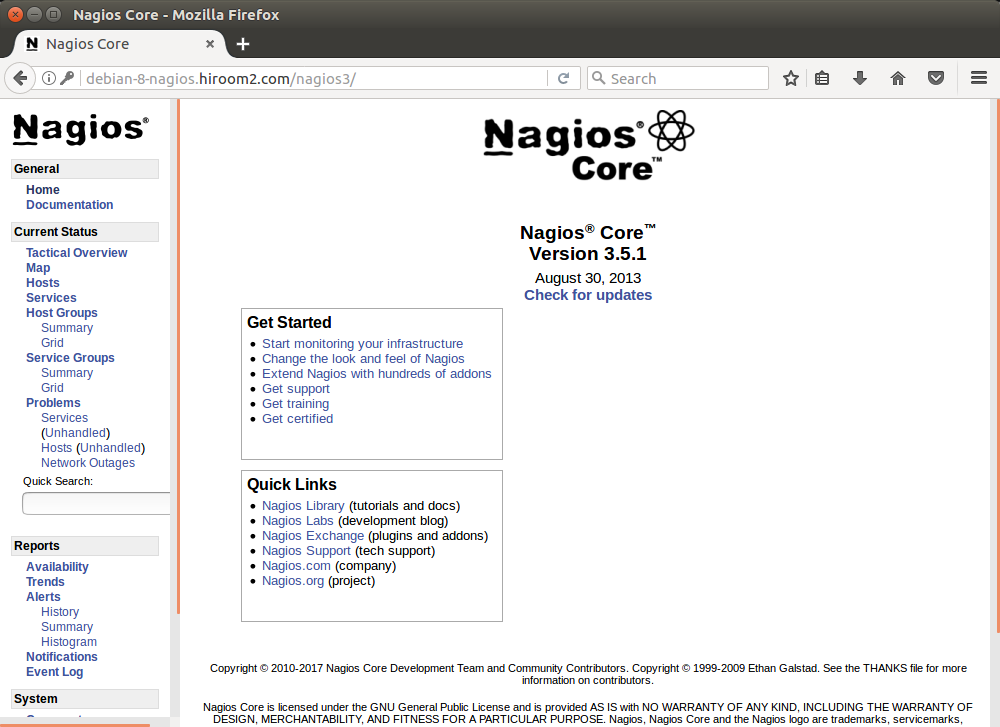This article will describe installing Nagios which is a web-base system monitor tool.
Table of Contents
1 Install Nagios
The following script will install Nagios. NAGIOS_PASSWD will be used for Basic authentication password of nagiosadmin user.
#!/bin/sh NAGIOS_PASSWD=nagios sudo dnf install -y nagios nagios-plugins-* # https://bugzilla.redhat.com/show_bug.cgi?id=1291718 sudo mkdir /var/log/nagios/rw sudo chown nagios:nagios /var/log/nagios/rw sudo chmod 700 /var/log/nagios/rw # Apache2 sudo htpasswd -db /etc/nagios/passwd "nagiosadmin" ${NAGIOS_PASSWD} sudo systemctl enable httpd sudo systemctl restart httpd sudo firewall-cmd --add-service=http --permanent sudo firewall-cmd --reload # https://bugzilla.redhat.com/show_bug.cgi?id=1291734 cat <<EOF > nagios-socket.te module nagios-socket 1.0; require { type nagios_t; type nagios_log_t; class sock_file { write create unlink }; class unix_stream_socket connectto; } allow nagios_t nagios_log_t:sock_file { write create unlink }; allow nagios_t self:unix_stream_socket connectto; EOF checkmodule -M -m -o nagios-socket.mod nagios-socket.te semodule_package -m nagios-socket.mod -o nagios-socket.pp sudo semodule -i nagios-socket.pp rm -f nagios-socket.te nagios-socket.mod nagios-socket.pp sudo systemctl enable nagios sudo systemctl restart nagios
Nagios configuration to Apache2 is written in the following file. You can change Nagios configuration like Digest authentication.
/etc/apache2/conf-available/nagios3.conf
2 Access to Nagios
Access to Nagios via the following URL.
http://<server>/nagios
Input nagiosadmin user and NAGIOS_PASSWD.

Nagios is displayed.
